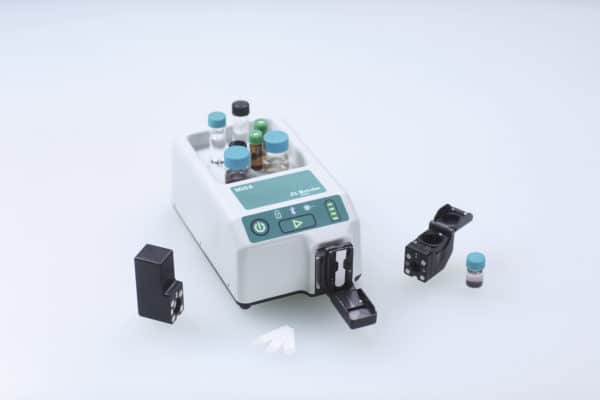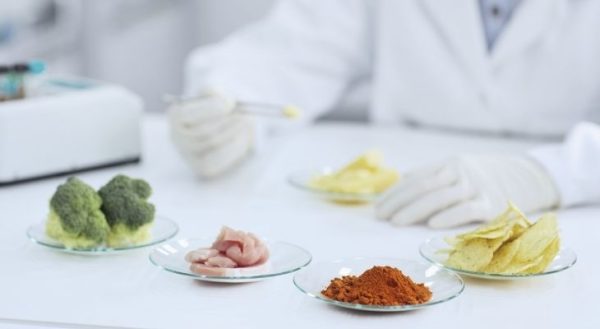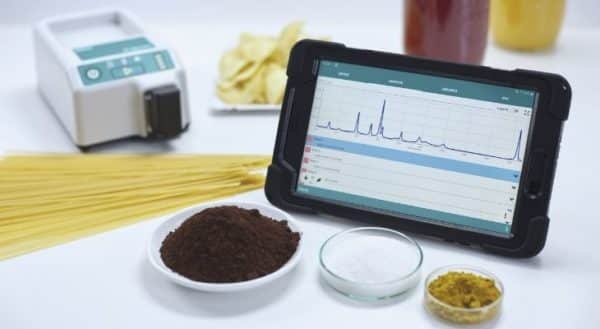What’s on your plate?
Food fraud is an ever-present danger around the world. Despite increased regulations, huge scandals still occur regularly, such as deliberately tainted infant formula (2008), or the horse meat affair in the UK due to improper labelling (2013). Other more common examples include the adulteration of highly valued items with lower cost substitutes, or the illegal enhancement of colour in foods and beverages with unsafe dyes.
As the population continues to increase, driving the demand for high quality food and beverage choices, so will the amount of food fraud cases. Only a concerted effort to test foodstuffs more frequently in an efficient manner along the supply chain with accurate and precise analytical techniques will bring these cases to light before more people come to harm.
Misa to the rescue
Meet the newest addition to the Metrohm Instant Raman Analyzer family: Misa, the Metrohm Instant SERS Analyzer. Misa is fast, smart, and portable with powerful algorithms that simplify high-tech analyses for non-technicians. Misa is designed with safety in mind, purposefully designed to detect illicit drugs and food additives in complex matrices.

Protecting Consumer Safety with Misa
Consumer safety relies on the ability of food inspectors to detect unwanted additives and assure the quality of the products. Trace detection of food adulterants is traditionally very involved laboratory work, using HPLC, GC/MS, and other techniques requiring extensive sample preparation and scientific training. Misa is designed to simplify food testing, from sample preparation, to sharing results.
The unique capabilities of Misa and SERS analysis in food testing deserve some explanation. Raman is used in food testing in some incredible ways: identifying counterfeit honey, distinguishing scotch from different producers, discriminating between very similar sugars, even making a distinction between grass- and grain-fed beef. However, these are bulk, inherent qualities of a food.
Looking for trace levels of pesticides is a very different science. A successful SERS analyte must interact with nanoparticles—target molecules with amine, carboxyl, and thiol groups often have the required interaction. Fortunately, many food additives fit this definition. Metrohm Raman sponsored a year-long study to identify 82 different food adulterants that can be successfully detected with our SERS substrates. That was just the beginning.

The next step was to determine the foods which were typically treated with these illicit substances, then how to simplify sample preparation for potentially demanding food matrices. Metrohm Raman is taking two different approaches to this challenge. First, Misa will be released with 17 different «real world» food safety applications (click to download):
Misa is a unique instrument, which is reflected in this broad collection of Application Notes (AN). In addition to standard spectra and experiments, each AN includes a special section titled «Field Test Protocol». Briefly, the Field Test Protocol guides any user through a complete experiment using Misa and the tools in the ID Kits. ID Kits for Misa contain dedicated SERS substrates, in addition to the basic tools required for field testing. These, combined with companion Operating Procedures included on Misa, make food safety testing accessible to anyone, anywhere.
Our second approach to application development for Misa is a very interactive process with our users as we identify the target and food matrix, provide standard spectra for library building, advise sample preparation, and help to optimize results. This approach acknowledges that food is different around the world, adulterants vary, and concerns may be localized. These ANs that accompany Misa at release are intended to give the user an idea of how to use SERS and when it is a useful technique for detection of food contaminants, but custom applications will certainly increase demand for Misa.

Metrohm Raman is excited to introduce you to Misa. Misa has all of the qualities that you appreciate about Mira—intuitive user interface, simple guided workflow, and smart attachments to facilitate onsite testing by non-chemists. Our approach to simplifying food testing includes libraries, dozens of reference spectra, and developed applications targeting food adulterants.

